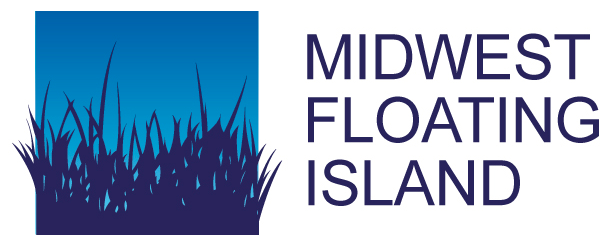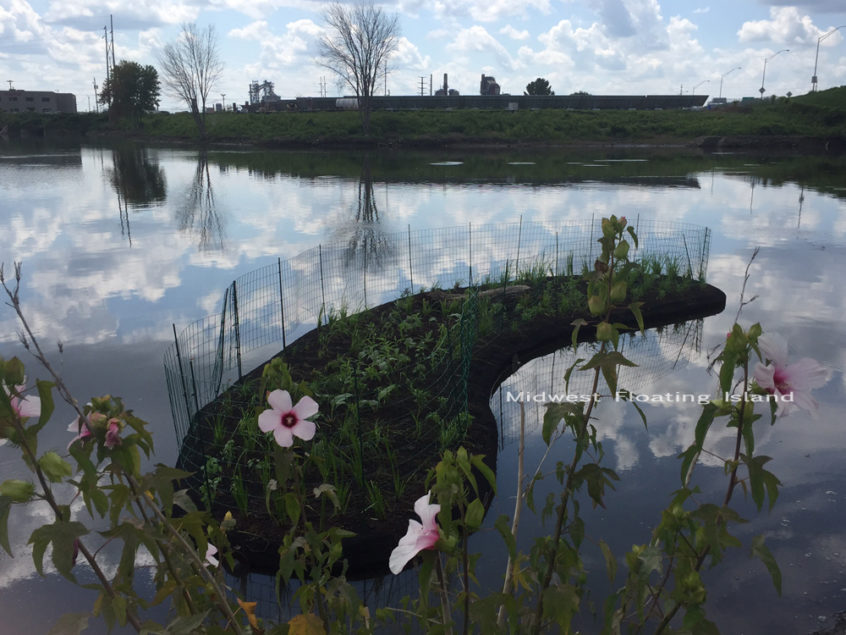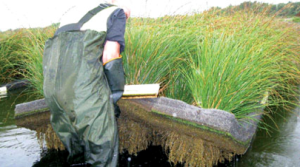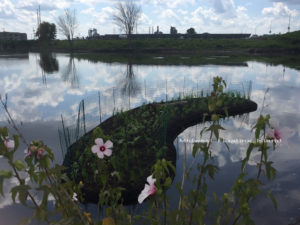1. Biodiversity
You can choose different plants on your floating island that are not growing on the shoreline. Many plants cannot grow well on the shoreline due to droughts or flooding as the water levels change.
2. Healthier Plants grow on Floating Wetlands
Native plants on islands often grow taller and healthier than their companions along the shoreline because they have greater access to sunlight and water.
3. Pollinators
Pollinators are in decline. Islands provide an innovative way to expand plants for pollinators beyond the shoreline with new “real estate” on the pond. Native plants have more nutritional value than annuals, which is particularly important for migrating pollinators.
4. Lower Maintenance
Native plants have a higher chance of survival than non-native perennials. Unlike annuals, native aquatic plants do not need to be replanted every year. This means that once the plants are well established, they require minimal maintenance.
5. Wildlife
Native birds, insects, animals and fish rely on native plants for food, breeding areas and shelter. Without these plants, certain species cannot survive. For example, the monarch butterfly relies on milkweed. You can often see beautiful butterflies fluttering around Swamp Milkweed that flourishes on islands.
6. Floating Islands help with Nutrient Reduction
It is a great idea to use plants for nutrient reduction in 2 ways – on the shoreline and on islands. Adding native plants on shorelines can reduce the amount of contaminating chemicals that are flowing into our waters from lawns and roads. This will help decrease the problem before it begins. For contaminants already in the water, plants on the island pull up excess nutrients through their root system. In addition, microbes that grow on the long roots of native plants break down contaminants.
7. Beauty
Midwest natives come in a variety of flowers, grasses and plants to add natural beauty to any landscape. Consider choosing plants that flower at different times in different sections of your island.
8. Invasive Species
Bringing in outside plants (not natives) to the region can have unknown and sometime catastrophic consequences. Invasive species can cause damage to the local landscape and wildlife. Native plants on the other hand are well-known in the area and are relatively predictable.
9. Oxygen
Excess carbon from the burning of fossil fuels contributes to global warming. Native plants sequester carbon from the air and produce oxygen. So, in addition to helping improve our water bodies, native plants also help provide cleaner air for us.




